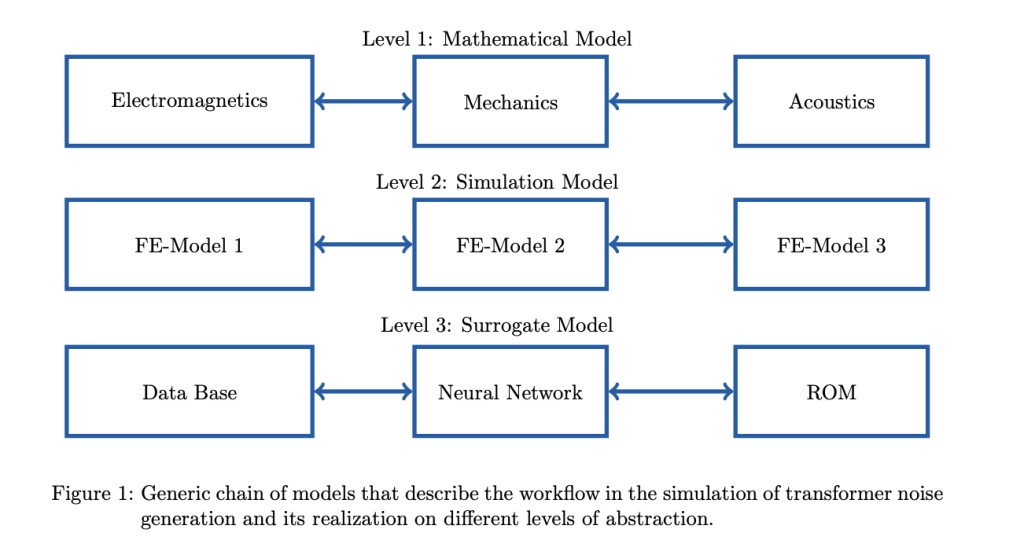The integration of data-intensive computational studies is vital across scientific disciplines. Computational workflows systematically outline methods, data, and computing resources. With complex simulation models and vast data volumes, Computational Sciences and Engineering (CSE) workflows facilitate research beyond simulations, enabling analysis of diverse data and methodologies. FAIR principles ensure research data are Findable, Accessible, Interoperable, and Reusable, guiding data stewardship. While CSE workflows are documented, inclusive abstract descriptions still need to be included. Emerging tools like Jupyter notebooks and Code Ocean facilitate documentation and integration, while automated workflows aim to merge computer-based and laboratory computations.
The challenge of reproducibility in computational workflows requires thorough examination. While popular for documenting and executing workflows, Jupyter’s design limitations, such as undocumented libraries and linear structure, hinder full reproducibility. Alternative tools like CWL and Galaxy offer advanced workflow management for various domains but also have limitations. FMI’s container-based approach aids in replicating simulations but requires metadata for broader reproducibility and adaptation.
Researchers from the Max Planck Institute for Dynamics of Complex Technical Systems introduce MaRDIFlow, a robust computational framework aiming to automate metadata abstraction within an ontology of mathematical objects. MaRDIFlow addresses execution and environmental dependencies through multi-layered descriptions. A prototype is developed, showcasing use cases and integration into a workflow tool and data provenance framework. Also, the researchers demonstrated the application of FAIR principles to computational workflows, ensuring abstracted components are Findable, Accessible, Interoperable, and Reusable.
MaRDIFlow’s design principle revolves around treating components as abstract objects defined by their input-output behavior and metadata. These objects are chained together based on metadata and matching I/O interfaces, forming a workflow. Different realizations of each item provide redundancy and flexibility. This multi-level description enhances reproducibility, accommodating scenarios where software components may be unavailable. The working prototype, accessible via command line, enables execution, documentation, and provenance maintenance for computer-based experiments, facilitating reproducibility and replication.
The current version of MaRDIFlow serves as a command-line tool, allowing users to manage workflow components as abstract objects based on input-output behavior. It ensures detailed output and comprehensive descriptions to aid in reproducing computational experiments. Use cases, such as CO2 conversion rates and spinodal decomposition, demonstrate its functionality while adhering to FAIR principles. Ongoing development aims to address diverse use cases in mathematical sciences. Also, plans include developing an Electronic Lab Notebook (ELN) to visualize and execute MaRDIFlow, providing researchers with a user-friendly interface for efficient interaction.
To conclude, This study introduces MaRDIFlow, a robust computational workflow framework prototype. MaRDIFlow automates the abstraction of metadata within a mathematical object ontology, mitigating underlying execution and environmental dependencies through multi-layered vertical descriptions. Components are defined by their input-output relations, allowing for interchangeable and often redundant use. This approach enhances flexibility and reproducibility in computational experiments.
Check out the Paper. All credit for this research goes to the researchers of this project. Also, don’t forget to follow us on Twitter. Join our Telegram Channel, Discord Channel, and LinkedIn Group.
If you like our work, you will love our newsletter..
Don’t Forget to join our 41k+ ML SubReddit
The post MaRDIFlow: Automating Metadata Abstraction for Enhanced Reproducibility in Computational Workflows appeared first on MarkTechPost.
Source: Read MoreÂ

